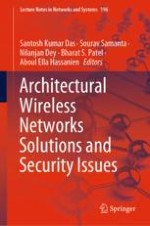2021 | OriginalPaper | Chapter
Technique to Reduce PAPR Problem in Next-Generation Wireless Communication System
Authors : Abhishek Kumar, Vishwas Mishra, Shobhit Tyagi, Priyanka Saini, Nikhil Saxena
Published in: Architectural Wireless Networks Solutions and Security Issues
Publisher: Springer Singapore
Activate our intelligent search to find suitable subject content or patents.
Select sections of text to find matching patents with Artificial Intelligence. powered by
Select sections of text to find additional relevant content using AI-assisted search. powered by
